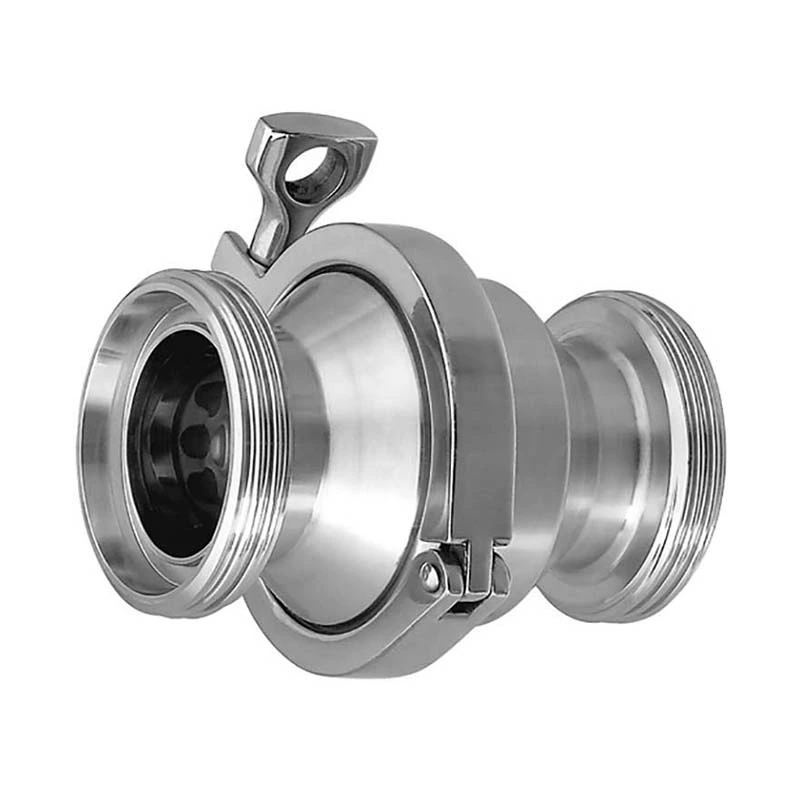Treatment Of Sanitary Valve Fittings After Installation And Rust Prevention Measures
Sanitary Valve Pipe fittings after installation and rust prevention measures
Pasteurization of stainless steel sanitary valves and pipe fittingsPasteurization is mainly used for purified water pipeline systems. Heat exchangers or storage tanks with jackets are installed on the circulation loop to heat purified water to above 80℃ (start timing when the most difficult temperature rise reaches 80℃). Maintaining it for 1 hour can reach the predetermined demand. Insulation equipment (heating capacity > heat dissipation) is used to ensure the sterilization temperature and time. Delivery pumps, sensors, etc. should also withstand hot water above 80℃.
The superheated water sterilization process is similar to pasteurization sterilization. The difference is that before heating starts, the system is pressurized to about 0.25 MPa with filtered nitrogen or compressed air, and then the system water temperature is heated to 125℃, which lasts for a period of time, and then cooled and discharged. The system is pressurized with filtered nitrogen or compressed air for protection.
Stainless steel sanitary valves and fittings UV disinfection Ultraviolet rays have a certain sterilization ability. Usually, the equipment is used in the purified water system to control the reproduction of microorganisms and prolong the operation cycle. It can also be used to decompose the residual ozone in the ozone sterilization system.
Sanitary valve fittings will not corrode in water, oil and gas, so sanitary valve fittings are widely used in conveying various fluid media, including sanitary fittings, sanitary valve quick-install butterfly valves, sanitary fittings quick-install elbows, etc. Sanitary valve fittings are mainly used at the junction of two pipes. According to the shape, they can be divided into equal-diameter tees, reducing tees and oblique tees. The application of equal-diameter tees and reducing tees does not need to be repeated. Oblique tees are generally used in pipelines that convey solid particles or have severe erosion and corrosion.
Sanitary valve fittings are 304 or 316L stainless steel, which have very good corrosion resistance in water, air and steam. Since it is not easy to rust and is non-toxic, sanitary valve fittings are also a very good living fittings, and are widely used in food packaging, hospital supplies, etc.
Sanitary valve fittings mainly refer to a kind of metal fittings used in the fields of pharmaceutical and food industries that require high sanitary requirements. Generally, special attention should be paid to the anti-rust measures of sanitary valve fittings during use. The methods to prevent sanitary valve fittings from rusting are as follows:
1. Dissimilar metal attachment: sanitary valve fittings are often affected by iron powder or other attached metals, and look like rust. For this, you can use sponges or cloths to wipe and remove rust, and then wash with clean water and dry.
2. Attached salt: In some coastal areas near the coast, they may often be hit by sea breezes, and stainless steel products will be affected by chloride ions and produce red rust. This method is also a scrubbing method, but attention should be paid to regular maintenance.
3. Attached exhaust harmful components: For example, near factories or places with complex traffic, the surface of stainless steel will be affected by polluted gases and cause spot rust. If the rust is minor, it can be cleaned with a neutral detergent.
